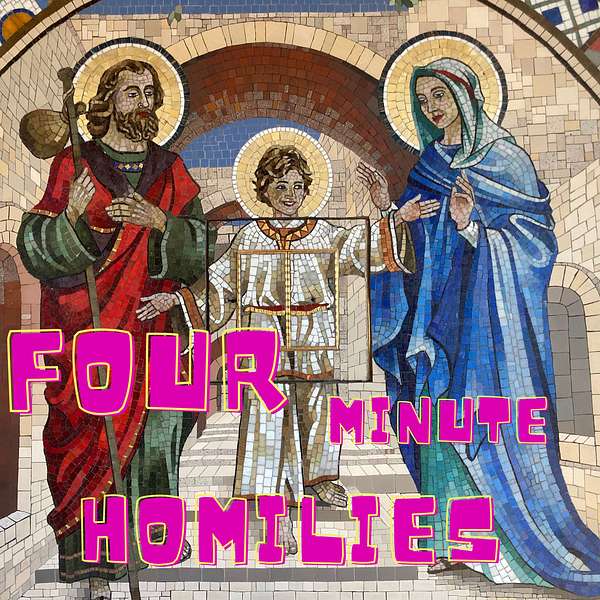
Four minute homilies
Short Sunday homilies. Read by Peter James-Smith
Four minute homilies
Fourth Sunday of Lent The Prodigal son
Lent 4 C The Prodigal Son
In chapter 15 of Luke’s Gospel, Jesus proposes three parables of mercy: the lost sheep, the lost coin, and the lost son. His Gospel has earned the title of Gospel of Mercy. To receive his mercy, first we need to recognise we are lost. Nowadays with GPS, it is very difficult to get lost, unless we run out of data or we lose our internet access. The most famous parable of all is the return of the prodigal son, the summary of the Gospel, very dear to our Christian faith, a reflection of God’s heart.
Henri Nouwen, a Dutch priest, went to Saint Petersburg to see the painting “The return of the prodigal son” at the Hermitage Museum, painted by Rembrandt at the end of his life. He spent the whole day in front of the painting, looking at how it changed with the light of the sun moving around. Afterwards he wrote a book in which he sees himself as the three characters portrayed, the prodigal son, the father waiting and the arrogant elder son. We can do the same ourselves, even though we don’t have the opportunity to spend the whole day in front of this famous work of art.
You can hardly see the prodigal son in Rembrandt’s painting, because he has almost disappeared into his father’s embrace. He is showing his back to us, completely hidden in his father’s arms. It is easy for us to play the role of the prodigal son because we need to do it very often. We know by heart the way back to our father’s heart. It is already a furrow in the ground, so many times we have traveled this way, the grass has disappeared. We can do it blind folded. Our contrition should be faster than our offences. As the blood comes out straight away when we get injured, the same way our apology should spring out: I’m sorry father.
The father is the central figure of Rembrandt’s painting. You can see his rapidly aged face caused by his suffering, but now with a gentle joy after recovering his lost son. He embraces the boy with his strong arms, not wanting to let him go. Once he has recovered his younger son, the apple of his eyes, he is not going to lose him again. This parable should be called ‘the father waiting’, ‘the father embracing’ or rather ‘the father celebrating’. He is the main character of the scene. Playing the part of the father reminds us of the responsibility of forgiving everyone. When we still have grudges against others, it means that we haven’t forgiven them from our heart. Instead of the father waiting, we are the father still hiding grudges. What worse thing that people can do other than to take half of our property?
The eldest son doesn’t want to appear in the painting. He keeps his distance in the background, looking at the scene with disdain, trying to disappear, only being there because Rembrandt painted him there. He wants to run away. He doesn’t want anything to do with this ‘son of yours’, this is how he calls his younger brother. He hasn’t forgiven him for taking half of his inheritance. Now his father is giving him more, starting with the fatted calf, a ring on his finger and new shoes. From our position of power, wealth or virtue, we can look at the prodigal sons of this world in the same way, forgetting that they are truly our brothers and sisters. What would Jesus do in my situation?
josephpich@gmail.com